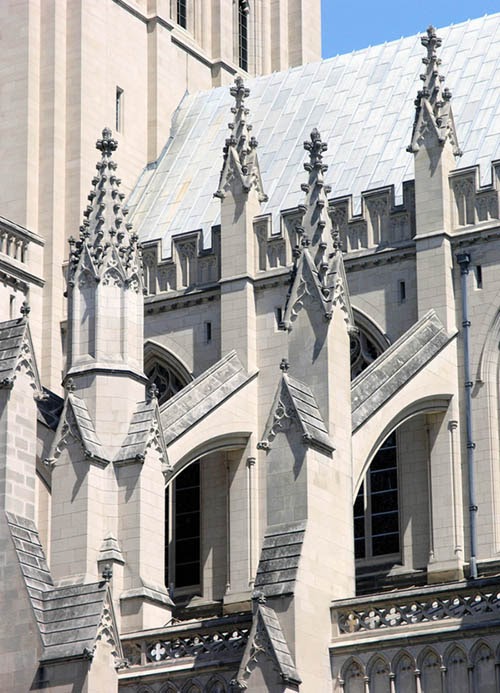
A huge component of Gothic architecture is the arches that were developed during that time. They are pointed arches with meaning that the height is not dependent on the width of the archway, unlike the Romanesque arches. During this time, the architects realized what an element of design the arches really are and emphasizes the vertical plane more than the horizontal one. Not only were they used as architectural features, they also served to hold up the walls and support the structure of the buildings.

One of the most famous buildings from this period is the Cathedral of Notre Dame de Paris. The upward expression of the cathedral shows the importance of the vertical plane and is highlighted by the towers, pointed arches, and spires. Not only that but along the horizontal axis, the facade is divided and the further the section is from the middle, the more narrow it is adding to the impression of height. Even the interior of the cathedral is built to establish a sense of height and light. They developed a four-story interior and eliminated space that was used for the clerestory which lets light into the main part of the church. Because of this, despite all of the glass and light incorporated into the design, the Notre Dame, like many other Gothic cathedrals, is actually quite dark.
Another key feature to the Gothic architecture was the flying buttresses. They started as a way to hold up leaning walls but evolved into an architectural feature that became the first step in separating the walls from the actual structure.These flying buttresses were a huge part of the architecture from this time and can still be seen in modern design today.
By making the profile of the buttresses as small as possible, more room able to be devoted to glass. Due to this, tracery was developed as a new way to define a space. With the availability of more wall space devoted to windows, architects needed a way to create large spans of glass. The tracery made of stone or metal, was a way to hold the glass in place. In order to emphasize the pattern that was created, the tracery was made as delicate as possible. Tracery was the beginning of modern mullion and glass-to-glass connections.




No comments:
Post a Comment